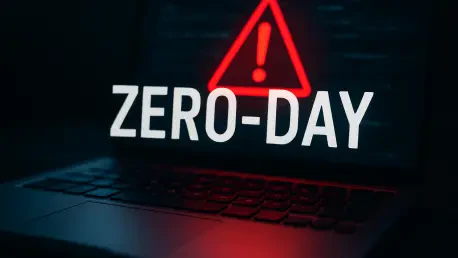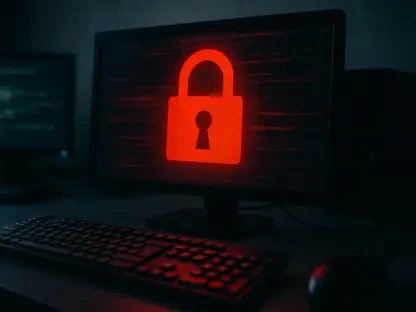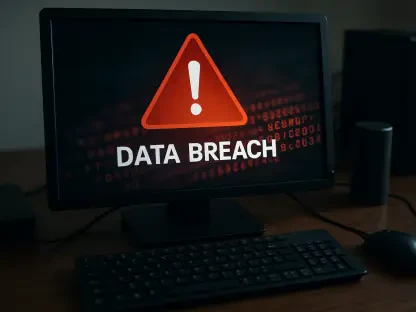In a chilling reminder of the persistent dangers lurking in the digital realm, a sophisticated cyber espionage campaign has emerged, targeting corporate systems with devastating precision and raising alarms across cybersecurity communities. Attributed to the China-linked threat group known as Tick, this operation has exploited a critical security flaw in Motex Lanscope Endpoint Manager, identified as CVE-2025-61932 with a CVSS score of 9.3. This vulnerability allows remote attackers to execute arbitrary commands with SYSTEM-level privileges, posing an imminent threat to organizations using on-premise versions of the software. Primarily focusing on East Asian countries, particularly Japan, Tick has demonstrated a calculated approach to infiltrate sensitive sectors. This alarming development not only underscores the group’s advanced capabilities but also highlights the urgent need for robust defenses against state-sponsored cyber threats. As details of this attack unfold, the broader implications for global cybersecurity come into sharp focus, demanding immediate attention and action from affected entities.
Unveiling the Threat Group’s Tactics
A deep dive into Tick’s latest campaign reveals a highly targeted approach aimed at specific industries in Japan, aligning with their long-standing intelligence-gathering objectives. Active for nearly two decades, this group has honed its skills in exploiting vulnerabilities in niche, region-specific software, often overlooked by broader security measures. The exploitation of the Lanscope zero-day flaw enabled attackers to infiltrate corporate networks, deploying a range of malicious tools designed for stealth and persistence. Sophos Counter Threat Unit (CTU) has meticulously documented this operation, noting that while the initial scope was narrow, the public disclosure of the vulnerability could invite other malicious actors to capitalize on the flaw. This potential for wider exploitation amplifies the risk, as more organizations may find themselves in the crosshairs of similar attacks. The precision with which Tick operates suggests a deep understanding of their targets, making it imperative for companies to reassess their exposure to such advanced threats and prioritize immediate remediation efforts.
Beyond the initial breach, Tick’s arsenal includes a backdoor named Gokcpdoor, which has evolved in its latest iteration to enhance covert communication with remote servers. This tool facilitates proxy connections and executes malicious commands on compromised systems, ensuring attackers maintain control over infiltrated networks. Sophos identified two distinct variants of Gokcpdoor: a server type that listens for incoming connections and a client type that reaches out to hard-coded command-and-control (C2) servers. Additionally, the attack chain incorporates other sophisticated methods, such as the Havoc post-exploitation framework and DLL side-loading via a loader called OAED Loader. These techniques, combined with tools like goddi for extracting Active Directory data, illustrate the multi-layered nature of the campaign. The use of Remote Desktop for access through backdoor tunnels further complicates detection efforts, highlighting the need for organizations to monitor for unusual network activity and strengthen endpoint security to counter such intricate threats.
Historical Patterns and Evolving Risks
Examining Tick’s track record reveals a consistent pattern of exploiting zero-day vulnerabilities to achieve espionage goals, a tactic that sets them apart as a formidable adversary. A notable precedent occurred several years ago when the group targeted an unpatched flaw in SKYSEA Client View, a Japanese IT asset management tool, to compromise systems and steal sensitive data. This historical parallel underscores Tick’s strategic focus on lesser-known software that may lack timely security updates or widespread attention. By repeatedly targeting region-specific applications, the group exploits gaps in defenses that larger, more scrutinized systems might not present. This recurring methodology serves as a stark warning to organizations relying on niche software, urging them to prioritize vulnerability management and stay vigilant for emerging threats. As Tick continues to refine its approach, the cybersecurity landscape must adapt to address these specialized attacks that evade conventional protective measures.
The evolving nature of Tick’s operations also points to a broader risk following the public disclosure of the Lanscope vulnerability. While the current campaign focuses on select Japanese sectors, the availability of exploit details could inspire other threat actors to replicate the attack on a larger scale. Sophos and JPCERT/CC have issued urgent advisories, emphasizing the importance of upgrading vulnerable Lanscope servers and scrutinizing internet-facing systems with associated client programs or detection agents. The potential for data exfiltration through tools like 7-Zip for compression and cloud services for transfer adds another layer of concern, as stolen information can be rapidly moved beyond organizational control. This situation calls for a proactive stance, where companies must not only patch known flaws but also enhance monitoring capabilities to detect and respond to suspicious activities. The sophistication of these attacks demands a shift in mindset, recognizing that cybersecurity is an ongoing battle against adversaries who continuously adapt their strategies.
Strengthening Defenses Against Future Threats
Reflecting on the campaign orchestrated by Tick, it becomes evident that their exploitation of the Lanscope zero-day flaw posed a significant challenge to affected organizations. The intricate use of tools like Gokcpdoor and techniques such as DLL side-loading demonstrated a level of expertise that caught many off guard. The historical tendency to target regional software vulnerabilities further compounded the difficulty of anticipating and mitigating these attacks. Alerts from cybersecurity experts played a crucial role in raising awareness, urging immediate action to protect critical systems. This incident served as a pivotal moment, highlighting the gaps in defenses that state-sponsored groups could exploit with alarming efficiency. The detailed analysis provided by research teams was instrumental in understanding the depth of the threat, ensuring that the lessons learned were not forgotten but instead used to inform future security strategies.
Moving forward, organizations must take decisive steps to safeguard against similar cyber espionage efforts by prioritizing timely software updates and reducing the exposure of internet-facing systems. Implementing comprehensive monitoring for unusual network behavior can help detect early signs of compromise, while investing in advanced endpoint protection solutions offers an additional layer of defense. Collaboration with cybersecurity experts and adherence to advisories from trusted sources like JPCERT/CC are essential for staying ahead of evolving threats. Beyond technical measures, fostering a culture of security awareness within organizations ensures that employees remain vigilant against potential risks. As the landscape of cyber threats continues to shift, proactive measures and a commitment to continuous improvement in security practices will be vital in preventing future breaches and protecting sensitive data from falling into the wrong hands.









